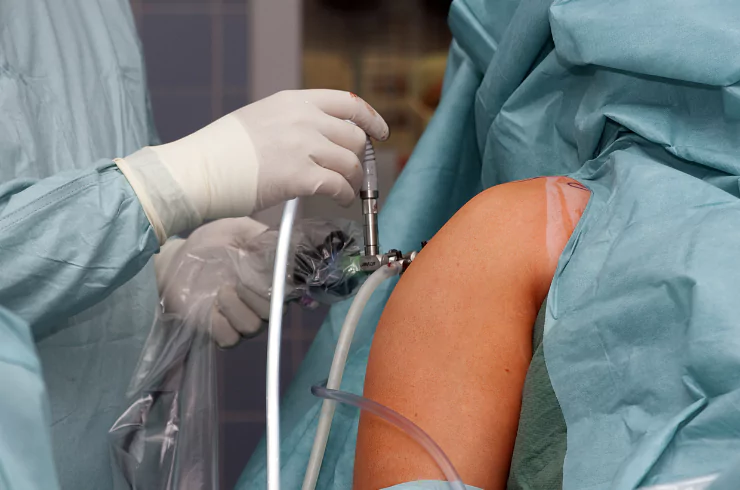Total Shoulder Replacement Surgery
- Home
- Total Shoulder Replacement Surgery

Total Shoulder Replacement Surgery, also known as anatomic shoulder arthroplasty, is a highly effective orthopedic procedure designed to relieve pain and restore function in patients suffering from severe shoulder joint damage. The procedure involves replacing the damaged parts of the shoulder joint — the humeral head (ball) and the glenoid (socket) — with artificial implants made of metal and polyethylene (plastic). It is considered the gold standard for patients with intact rotator cuff tendons and advanced arthritis or degenerative joint disease.
Who Needs Total Shoulder Replacement?
This surgery is recommended for individuals who have:
- Osteoarthritis (wear-and-tear arthritis)
- Rheumatoid arthritis
- Post-traumatic arthritis
- Avascular necrosis (bone death due to lack of blood supply)
- Severe fractures of the shoulder joint
- Chronic shoulder pain and stiffness not responding to conservative treatment
These conditions often lead to joint surface damage, causing pain, swelling, stiffness, and reduced mobility, which interfere with daily activities such as dressing, lifting, or even sleeping.
How the Procedure Works
Total shoulder replacement is performed under general or regional anesthesia. During the surgery:
- The surgeon makes an incision over the shoulder to access the joint.
- Damaged cartilage and bone are removed from the humeral head and glenoid.
- A metal ball is implanted on top of the humerus, and a new plastic socket is fixed into the shoulder blade.
- The components are aligned to recreate smooth, pain-free motion.
The entire procedure typically takes 1.5 to 2 hours, and patients may stay in the hospital for a few days post-surgery.
Benefits of Total Shoulder Replacement
- Significant pain relief
- Restoration of shoulder mobility and function
- Improved sleep and quality of life
- Long-lasting implant durability (often 15–20 years)
- Enhanced ability to perform everyday activities
Post-Surgery Recovery
Recovery involves a structured rehabilitation plan:
A sling is usually worn for 3–4 weeks.
Physical therapy begins with passive range-of-motion exercises, gradually progressing to active movement and strengthening.
Most patients regain good shoulder function within 3–6 months.
Full recovery may take up to a year, depending on age, health, and adherence to rehabilitation.
Risks and Complications
As with any major surgery, total shoulder replacement carries certain risks:
Infection at the surgical site
Blood clots
Nerve or blood vessel damage
Implant loosening or wear
Shoulder stiffness or limited range of motion
Choosing an experienced orthopedic surgeon and following all post-operative care instructions greatly reduces these risks.
Is It Right for You?
A detailed clinical evaluation, imaging studies (X-rays, MRI), and review of your medical history help determine if you’re a candidate. Those with severely damaged joints and functioning rotator cuffs benefit most from this surgery.
Treatments
Need Expert Orthopaedic Care?
Schedule a personalized consultation with Dr Abhishek Gupta and take the first step toward pain-free mobility and a healthier, active lifestyle.
